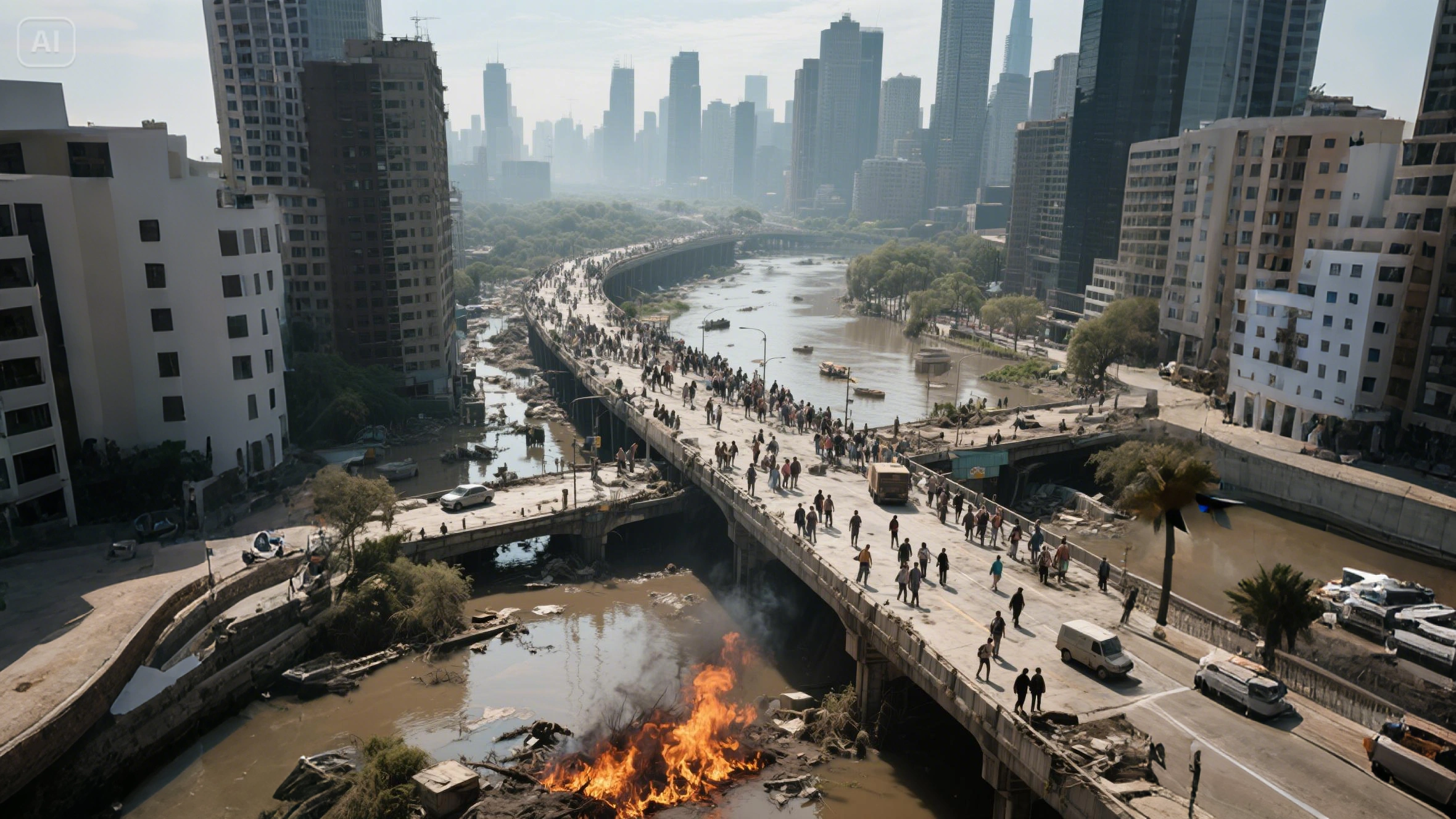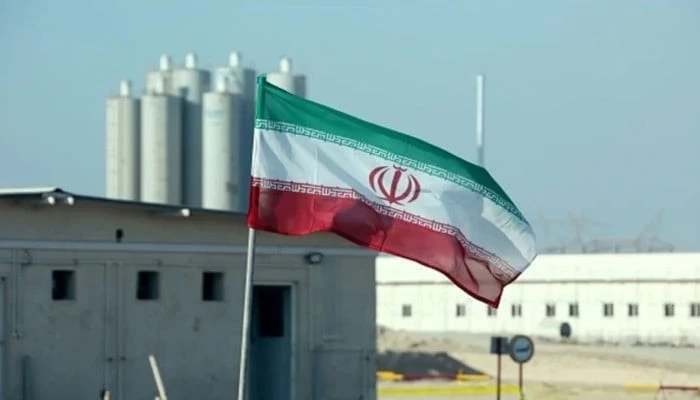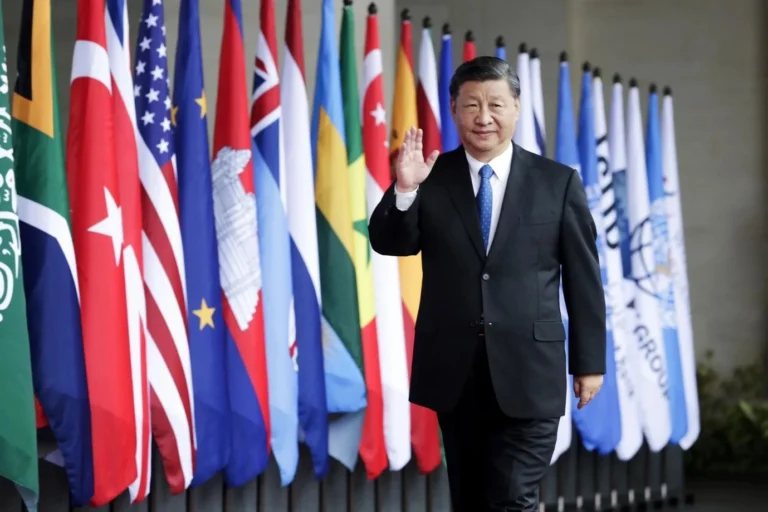The Strain of Climate displacement on Urban Infrastructure

The Strain of Climate displacement on Urban Infrastructure
Global warming does not only affect temperature increase and extreme weather but rather has its ripple effects which are being experienced far beyond both. Climate displacement, a displacement of people by the environment through flooding, droughts, wildfires and rising sea levels, is one of the most urgent outcomes. The strain exerted due to this movement upon urban infrastructure is like nothing previously experienced. Likewise, cities around the world struggle to adjust to the rate of change that is not only demographically awkward but also environmentally imperative.
Climate Displacement- What Is It?
Environmental or climate-induced migration, also called climate displacement, is the migration of people or population caused by negative climate-related phenomena. These may be sudden (hurricanes, floods, etc.) but also, they may be slow onset, e.g. desertification, sea-level rise. There has been an increasing number of displaces each year because of climate related disasters, according to the internal displacement monitoring center (IDMC) there are millions of displaces annually and the numbers keep rising.
Great Reasons behind Climate Displacement:
The increase of water level which floods the seaside.
Unbearable heat rendering areas inhabitable.
Sustained food and water shortages because of droughts.
Houses and vital infrastructure burned down by wildfires.
Floods and storm surge that moved homes away.
The pressures in urban migration and population
There is no iota of doubt that the migration of human beings to urban centers happens whenever individuals migrate because of climatic changes. Although, Cities promise an opportunity to find employment, protection and provisions of basic amenities. Whatsoever, Such a fast and unplanned influx of population is, however, rarely prepared to be handled by these cities.
Stressed Urban infrastructure
Urban infrastructure is transportation systems, houses, water supplies, sanitation, energy climes, and hospitals. Climate displacement has great impacts on:
- There are Shortages in Affordable Housing.
The abrupt inflows in populations cause surges in demand for housing. The immigrants with low income are forced into crowded slums or settlements, fueling urban poverty and social inequality due to a lack of space and an increasing cost of living in the form of housing.
- Congested Transportation Systems
In most developing cities, public transport systems are already done to a high capacity. Paroxysm in population causes traffic jams, lateness in commute and air pollution.
- Strained Water and Wash structures
The new dwellers need clean water and clean sanitation. This added demand, however, in cities already having their own water shortage or older infrastructure, is difficult to handle, exposing cities to waterborne diseases.
- Strain on the health care system
Migrants arrive with unexamined conditions or with mental health issues because of the trauma. Yet, Medical institutions, especially low-income urban ones, might not have the ability to react to the situations adequately.
- Energy Supply Problems
The supply of energy grids to the urban areas, especially those under development, are often unreliable. An increase in populations leads to additional demand and, hence blackouts or higher prices of energy resources.
The issues and problems with Urban Planning.
Climate migration was not considered when planning most cities. The unpredictive urban planning adds to the helplessness of newcomers as well as the residents.
Reactive Planning and Proactive Planning
Most of the solutions to displacement in cities are reactive-improvised zoning, emergency assistance, pop-up shelters. Such strategies are hardly ever sustainable. It is important to have proactive climate resilient planning which must be incorporated:
Inclusive zoning ordinances of affordable housing.
Budget allocations towards clean infrastructure such as green structures and energy-grid run off solar energy.
Increase in the number of low-emission vehicles in the public transportation.
Smart sewage and strategies for water saving.
Predictive analysis based on data used into the future of migration.
Polished Cities: Climate Displacements Cities: Case Studies
- Dhaka, Bangladesh
Dhaka experiences the accession of hundreds of thousands of new occupants every year as the high sea levels flood the Bay of Bengal area. The urban setup is overloaded, which has created shanty towns and unfavorable sanitation.
- Lagos, Nigeria
Climate extremes on the West and North coasts and in the desert, regions are rendering Nigeria inhabitable. The country is known to have an economic hub, Lagos, with its delta of high levels of migration, unregulated development, and an over-stretched network of public service.
- Jakarta, Indonesia
The rise of sea-level is accompanied by land subsidence in Jakarta. With movements of population to inner islands due to the perennial inner island flooding, the city is experiencing chronic congestion and poor drainage, and the government has therefore contemplated on the relocation of the national capital.
Solutions and Recommendations to the Policies
To mitigate the effects of climate displacement on the urban infrastructure, leaders at the national and municipal level should collaborate and cooperate with international organizations, privates, and neighborhoods.
Significant Strategies are:
Climate resilient infrastructure investment: Invest now with future conditions in mind; i.e. higher temperatures, increased rainfall, and shifts in population distributions.
Decentralization policies: Senior secondary cities should also be fostered as a relief to the big cities.
Legal representation of climate migrants: International and national laws should be created to preserve the rights of climate migrants.
Public-private partnerships: Develop partnerships in housing, energy and mobility.
Community-based adaptation: Engage the local people to solve contextual solutions at the local level.
The Future Is Coming
Climate displacement is no longer an issue of the future; it must be taken as an existing reality. The cities should respond to the challenge and transform their infrastructure and planning strategies. By neglecting this problem, there is a risk of humanitarian emergencies, financial instability, and nature degradation.
Meanwhile, climate displacement presents a chance: to envision cities as places where everyone can belong, that are strong enough to resist disruptions in the form of floods and droughts, and ones that are environmentally friendly. Urban areas can transform into communities of demonstration of how to live in a changing climate by not abandoning the most vulnerable with appropriate investments and policies foresight.












